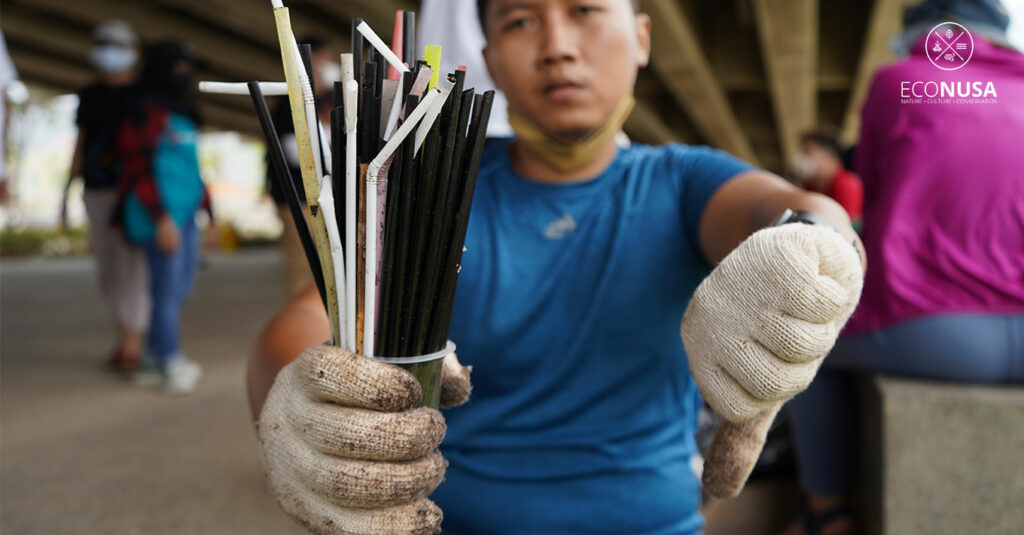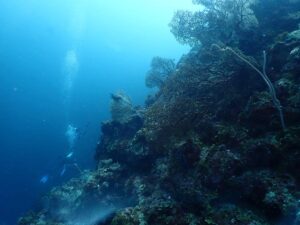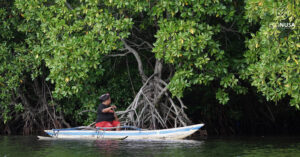
Plastic waste with toxic substance content and hard to extract can be mostly found in the oceans. The International Union for Conservation of Nature (IUCN) website mentioned that at least 14 million tons of plastic end up in the ocean every year. The United Nations Environment Programme (UNEP) 2021 report shows that the total amount of plastic in the oceans according to research conducted since 2015-2020 reached 75-199 million metric tons.
In Indonesia, according to the World Bank (2021), there are 346.5 thousand tons of plastic waste discarded into the oceans. The source of plastic waste mostly comes from the Java region (129.3 thousand tons/year) and Sumatra (99.1 thousand tons/year).
Plastic waste that ended up in the oceans came from human land-based activities. UNEP report shows that plastic production in 2019 reached 368 million metric tons. Agriculture, transportation, development, and construction up to the use of medical tools during the pandemic are some of the activities that can cause accumulation of plastic waste in the oceans.
Read Also: Microplastic and Plastic Waste Threatening Life
Plastic waste threatens marine animals that live in the ocean. Because of its lightweight, plastic waste can float and spread throughout the ocean. As a result, so many cases were found where marine biota got entangled, accidentally eaten, and got sick because of plastic waste. This caused lethal impacts such as behavioral change and also death to marine biotas.
Plastic waste floating in the sea water column that looks like jellyfish are considered as prey by sea turtles. UNEP report shows that almost every sea turtle that has been inspected has plastic waste such as plastic bottles, fishing line, up to paint flakes in their intestines.
Not only jeopardizing marine animals, the accumulation of plastic waste found in the key ecosystems, such as coral reefs, mangroves and seagrass can cause disturbance of carbon equilibrium in nature. This can lead to obstruction of photosynthesis by primary producer organisms such as microalgae.
Read Also: Efforts in Handling Plastic Waste in Maluku and Papua
Research conducted by Kurniawan (2021) mentioned that the accumulation of plastic waste can prevent sunlight and cause seagrass leaves to be curved and yellowish. Meanwhile, research conducted by Cordova (2017) mentioned that the accumulation of plastic waste can obstruct the sediment and slow down the growth of mangrove seeds. Waste from abandoned catching tools such as nets, ropes, and nylons, can corrupt the tissues that lead corals to be exposed to disease.
In addition to marine ecosystems threats, plastic waste can also be harmful to humans. The accumulation of waste makes people spend less time on beaches. In some cases, even tourists are unwilling to visit destinations if there is accumulation of waste. This leads to the declining physical activities, social interactions, and lowering income for tourism areas.
Besides, plastic waste stuck in propellers can diminish the stability and slow down the vessels. This can harm the vessel crews, especially in bad weather conditions.
Read Also: Podomoro Students Fights against Plastic at Teluk Naga
Addressing sea debris problems management, President Joko Widodo published Presidential Regulation (PP) Number 83/2018 about Marine Debris Management. This regulation stipulating a national action plan sets a target to reduce 75 percent plastic debris in the oceans by 2025.
A follow-up of the regulation here is the establishment of multi-stakeholders collaborations named National Plastic Action Partnership (NPAP). Quoted from indonesia.go.id, the Acting Deputy for Coordination of Environmental and Forestry Management, Coordinating Ministry of Maritime Affairs and Investment, Nani Hendiarti, said, through NPAP there has been 11.2 percent reduction of plastic waste in the oceans.
Furthermore, the Indonesian Government through the Ministry of Environment and Forestry (MoEF) has published the MoEF Ministerial Regulation Number 75/2019 about Waste Reduction Roadmap by Producers.
Read Also: Young People, Key to Environmental Success in Namatota
MoEF’s Waste Reduction Director, Sinta Saptarina Soemiarno, said, “Producers must conduct 3R by reducing waste accumulation, recycling waste, and reusing waste,” in a webinar held by MoEF entitled “Plastic Credit, New Ideas of Reducing Plastic Waste Solution?” on February 24, 2022.
By November 2021, there were 31 waste reduction roadmap planning documents that had been submitted by producers. Unfortunately, public access to review the documents is still limited.
Editor: Leo Wahyudi, , Nur Alfiyah, Lutfy Putra









